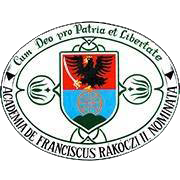Please use this identifier to cite or link to this item:
https://dspace.kmf.uz.ua/jspui/handle/123456789/1184| Title: | Різноманітність підходів до іншомовної підготовки в європейському освітньому середовищі |
| Other Titles: | Diversity of Approaches to Foreign Language Training in The European Educational Environment |
| Authors: | Сіладі Василь Szilágyi László Siladi Vasyl |
| Keywords: | іноземна мова;іноземна підготовка;Загальноєвропейські рекомендації з мовної освіти |
| Issue Date: | Feb-2021 |
| Publisher: | Дрогобицький державний педагогічний університет імені Івана Франка |
| Type: | dc.type.researchArticle |
| Citation: | Сіладі Василь: Різноманітність підходів до іншомовної підготовки в європейському освітньому середовищі. In Молодь і ринок: щомісячний науково-педагогічний журнал. 2021 лютий. № 2 (188) c. 145-149. |
| Series/Report no.: | Щомісячний науково-педагогічний журнал;№2 (188) |
| Abstract: | Резюме. В статті здійснено аналіз підходів до іншомовної підготовки в сучасному європейському освітньому середовищі. Виокремлено аспекти комплексного підходу до вивчення іноземних мов: багатомовність в школах та установах професійної підготовки і навчання; ефективне і новаторське викладання для поглибленого вивчення мови; підтримка вчителів і тренерів; партнерські відносини і зв’язки в шкільному середовищі для підтримки вивчення мови. Зроблено висновок, що іншомовна підготовка сьогодні розглядається не просто як передача і накопичення знань, а як формування ключових компетенцій, які підготували б людину до реальної професійної діяльності в мультикультурному суспільстві. Іноземна мова сьогодні є важливим чинником успішного кар’єрного зростання, а вміння спілкуватися в письмовій та усній формі рідною та іноземною мовами є вимогою до професійної компетенції висококваліфікованого працівника у будь-якій галузі. Abstract. The article analyses the approaches to foreign language training in the modern European educational environment. The aspects of a comprehensive approach to the study of foreign languages are highlighted: multilingualism in schools and institutions of vocational training and education; an effective and innovative teaching for in-depth language learning; support for teachers and trainers; partnerships and connections in the school environment to support language learning. It is emphasized that a positive attitude towards linguistic diversity can help to create a favourable language environment in which the study and use of several languages will be perceived as a wealth and a resource. An emphasis is placed on the connection between everyday language practice and schools or vocational schools, which can be strengthened in the process of non-formal learning. The experience of cooperative learning is valuable, in the process of which students can help each other in learning, and explain the features of foreign meanings and concepts. It is important for foreign language training and social integration to establish partnerships between educational institutions in the regions in particular border regions, which can encourage children to learn the language of the neighbouring country from an early age and thus reduce language barriers. It is noted that the possibilities of digital tools should be used to improve foreign language learning, teaching and assessment. Teachers of modern languages should be encouraged to participate into exchange programs with the countries where they speak the languages being studied, as part of their initial training and/or further professional development. Vocational education and training schools and institutions can work with parents to support the children’s learning of foreign languages, especially if the children live in a multilingual family. It is concluded that foreign language training today is considered not just as the transfer and accumulation of knowledge, but as the formation of key competencies that would prepare a person for real professional activity in a multicultural society. Today, a foreign language is an important factor in successful career growth, and the ability to communicate in writing and orally in native and foreign languages is a requirement for the professional competence of a highly qualified worker in any field. |
| Description: | http://mir.dspu.edu.ua/issue/view/13965 |
| URI: | http://dspace.kmf.uz.ua:8080/jspui/handle/123456789/1184 |
| ISSN: | 2308-4634 (Print) 2617-0825 (Online) |
| metadata.dc.rights.uri: | http://creativecommons.org/licenses/by-nc-nd/3.0/us/ |
| Appears in Collections: | Szilágyi László |
Files in This Item:
| File | Description | Size | Format | |
|---|---|---|---|---|
| Szilagyi_L_Riznomanitnist_pidkhodiv_do_inshomovnoi_pidhotovky_2021.pdf | Сіладі Василь: Різноманітність підходів до іншомовної підготовки в європейському освітньому середовищі. In Молодь і ринок: щомісячний науково-педагогічний журнал. 2021 лютий. № 2 (188) c. 145-149. | 552.73 kB | Adobe PDF | View/Open |
This item is licensed under a Creative Commons License





